Welcome to the next instalment in the original “Top 10 Tastings” that we’ve been running for a few years now. The Top 10 Tastings at WineFolio usually aim to look at a ‘Varietal’ – we separate Syrah, Sauvignon Blanc or Pinot Noir and judge the wines on the merits of that variety. For a wine to win the Top 10 Tasting, it not only has to be the most delicious wine on the day; but it needs to be varietally-specific. By that I mean it has to taste of – for example – Sauvignon Blanc…and what a customer might reasonably expect to be getting. In New Zealand, we produce very good Pinot Noir, but, also, a Central Otago example might have quite different flavours to one from Wairarapa. Getting those expressions across in the glass is what helps make it a “Top 10” wine.
At the beginning of this latest Top 10 Tasting, our assembled panel talked about rosé wine in general. Rosé isn’t necessarily seen as a ‘serious’ wine – it isn’t varietally specific – but then, neither is Champagne or ChateauNeuf-du-Pape. Both of which are undoubtedly serious wines. Rosé can be made in a multitude of ways, styles and from a range of grapes – to end up at that lovely pale pinkness in your glass.
Can a rosé be a 100 point wine? Any wine can hit that theoretical height, but you can argue that it is harder for a rosé to do so, as you don’t have that ‘varietal typicity’ at play. We tasted several wines that would have won a gold medal according to show-judging scores, and a lot of good silver medal standard wines too. The majority of the examples tasted in our Top 10 Tasting would sit happily on any table and be enjoyed. There were only a couple of wines that our panel thought of as outliers. There were a couple where the wines were more distinctly varietal than a customer might expect in a rosé – tasting more like ‘a pink Sauvignon Blanc’, for example.
Rosé has really come of age in New Zealand, and there’s no doubt that producers are taking it seriously! Many wine labels now have a rosé in their range, and a lot of the wines we tried were ‘straightforward’ examples of what customers have come to enjoy in this, increasingly popular, style of wine.
On to the (winning) wines..
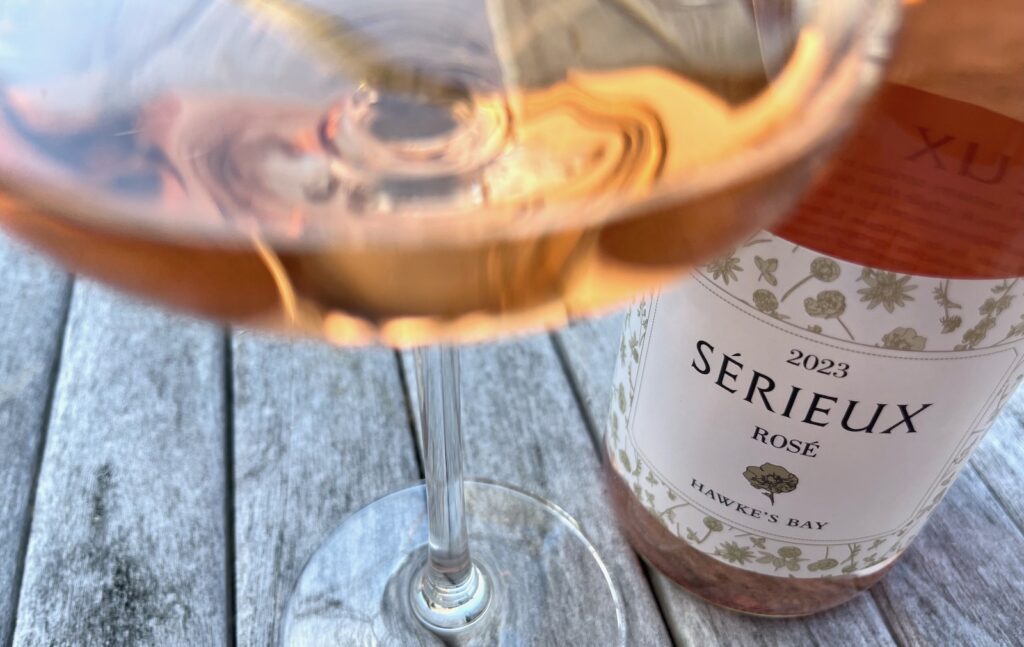
No. 1: Askerne – Sérieux
One of a pair of rosés from Askerne – both had their admirers, and this one made the step up from third place the last time we did a Top 10 Tasting of Rosé, to the top spot this time around. It was one of only a handful that drew top scores from everyone. Generally there’s one judge who doesn’t find their taste aligned with the others on any one wine, but this one was a popular choice.
Winemaker at Askerne, Cairn Coghill, had this to say about the winning wine:
“The 2023 Sérieux Rosé is a unique blend of grape varieties; Malbec (54%), Mourvèdre (28%), Merlot (10%), and the balance made up with Cabernet Franc, Cabernet Sauvignon and Petit Verdot. The Malbec and Mourvèdre were direct pressed and individually cool fermented in stainless steel tanks. The other rosé components were sourced via saignée (juice drain off) from freshly crushed Reserve red fruit parcels, also cool fermented in stainless steel tanks. A combination of different aromatic yeast strains were used to build complexity.
Different combinations of the various components were trialed until the best blend was found. The blend has always had Mourvèdre in it, which is what gives it’s distinctiveness, a kind of floral, tropical lift and juiciness on the palate. Malbec became a feature in the 2022 Serieux, and again worked really well in the 2023. The Malbec brings a wonderful brightness to the wine, and have found it a good fit with the Mourvèdre. The other components were used to help round out the palate, and bring balance.
We always aim to have a wide range of Rosé components to work with (often including barrel ferments) as we also blend the Fleurty Rosé from these. For the Serieux, as the name implies, we are looking for components that have greatest level of aromatic finesse, but also structure and richness (more serious) whereas some of the other components lean towards being fruitier and softer, which suit the Fleurty blend more”.
PRODUCTION: 220 cases
ANALYSIS: pH 3.41 • TA 7.7g/L • Alcohol 13.5% • Residual Sugar 1.1g/L
This is what the WineFolio team thought of the best wine on the day:
A super pale salmon colour – right on point in terms of what our Wine Bar customers are looking for. With a vibrant aroma of summer berries, yellow melon, guava and blackcurrant, with a lovely floral note on the nose as well. A bright, taut, dry style, but with creamy texture adding balance. Good weight and depth – quite serious (as labelled). “subtle with a dry, long finish” according to the notes.
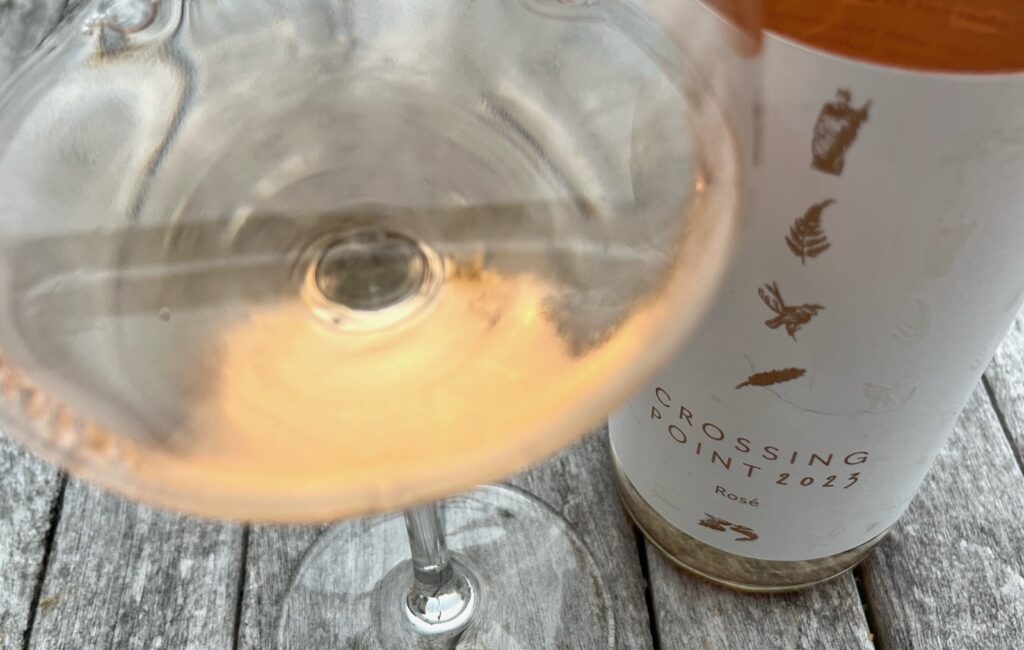
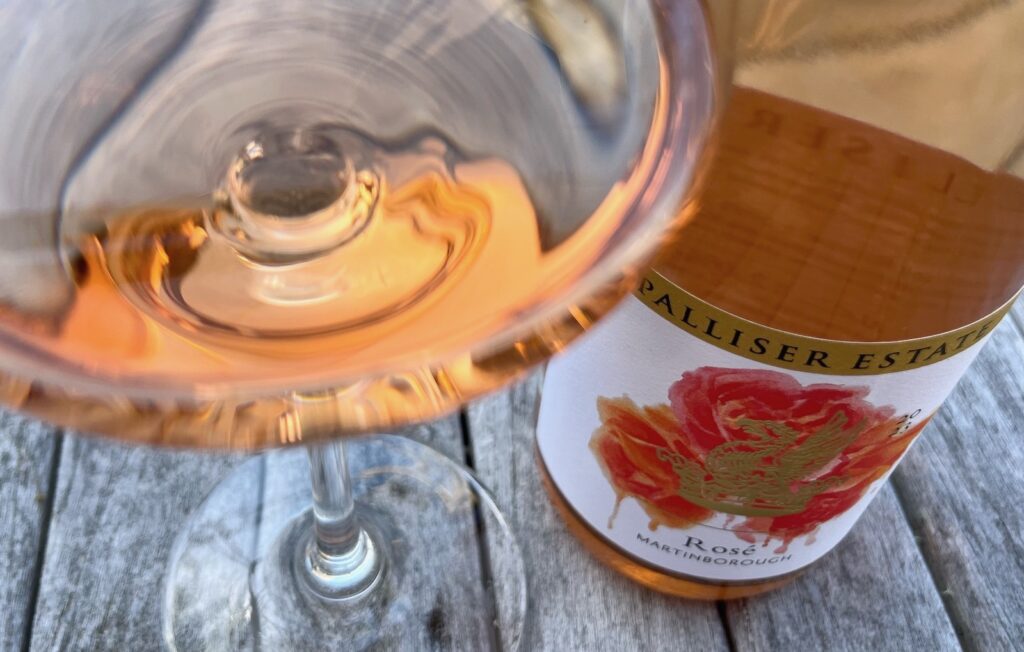
No. 2: The Crossing Point
Very pale in the glass – a barely-pink expression in terms of colour alone. The perfume contains some green, grassy garrigue notes, with white peach and a little smokiness there too. Definitely heading off-dry on the palate, but that fruit sweetness adds some texture too, and there is good acid linearity. Spice, ginger and savoury notes come through in a complex, interesting example, that still has plenty of balance and “simply delicious” character.
No. 3: Palliser
One of the first notes on this entry was the “appealing pale copper-coral colour”. Bountiful aromas of cherry, satsuma, redcurrant, toasted almond and leafy green herbs. The palate is fresh, dry and even; but “elegant with a nice weight” in our notes. There’s a chinotto-bitterness at the finish that is mouth-watering and zesty. A generous all-rounder – they finished as wine no.4 in the Top 10 last time – up one place to the podium this time.
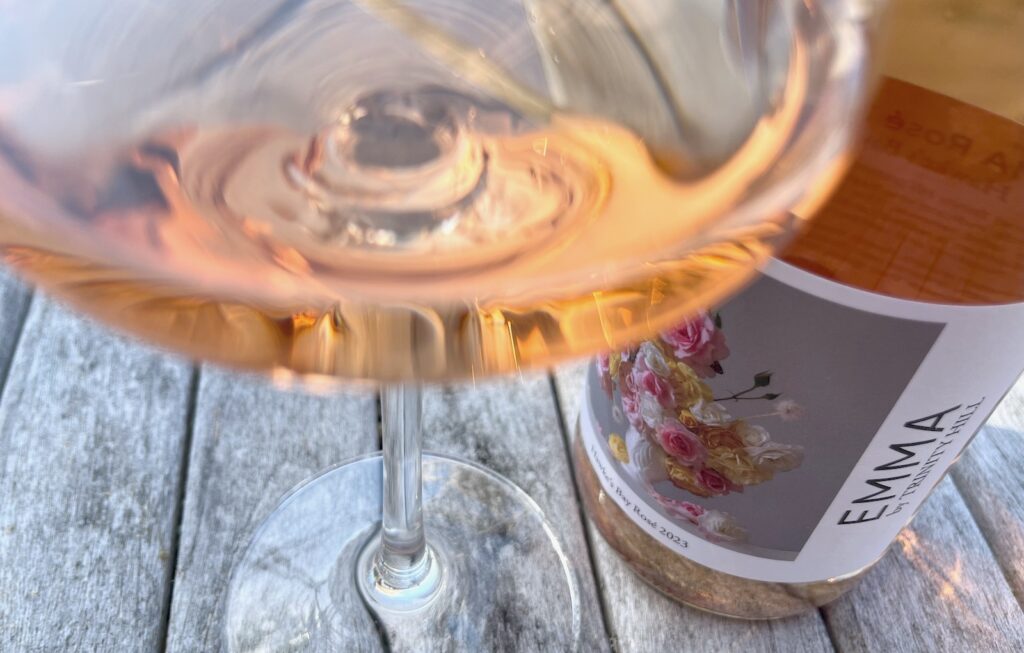
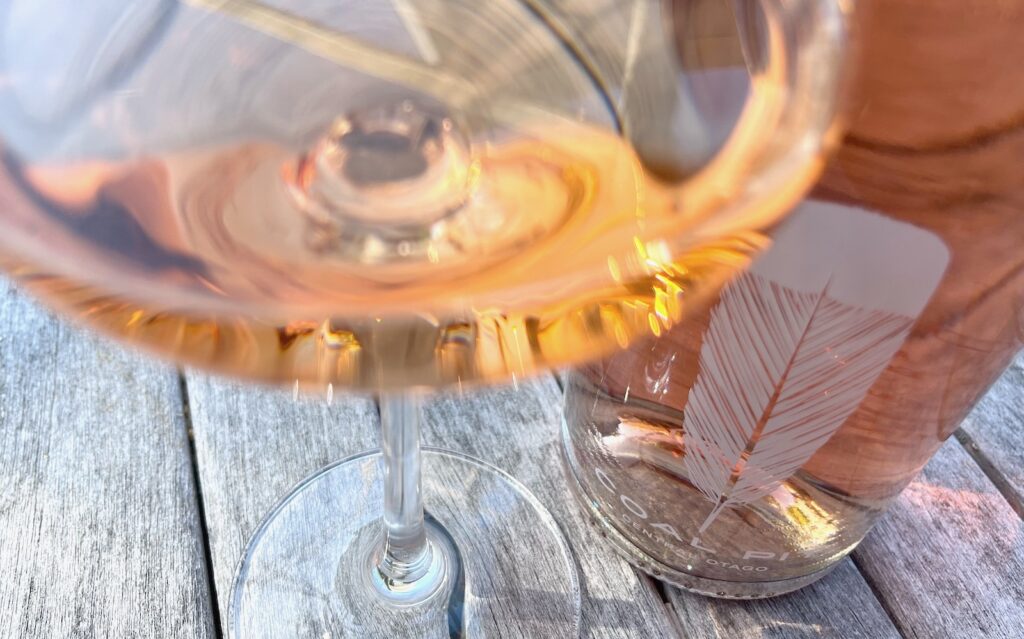
No.4: Trinity Hill – Emma
An aromatic, softer nose, filled with floral notes of lilac and honeysuckle. Also some damson, szechuan pepper and red liquorice. The lively palate springs to life with a bling of acidity, juicy summer berries, and a nibble of fruit sweetness. A dry, understated style, with a calm finesse -“classy” featured in a couple of tasting notes. A creamy texture rounds things out, and heads to a long finish.
No.5: Coal Pit
A pale rose petal pink in the glass, but presenting something quite characterful on the nose – one judge was “pretty sure it is Pinot” with cherry, rhubarb and pink grapefruit aromas.But wait, and there is that oyster shell quartzy minerality that (according to David) speaks of Central Otago. A seaspray salinity of acid and the minerality add up to a complex but tight and serious style. There’s both savoury and sweetness as you travel through the palate. One of our judges thought this to be their favourite wine of the day.
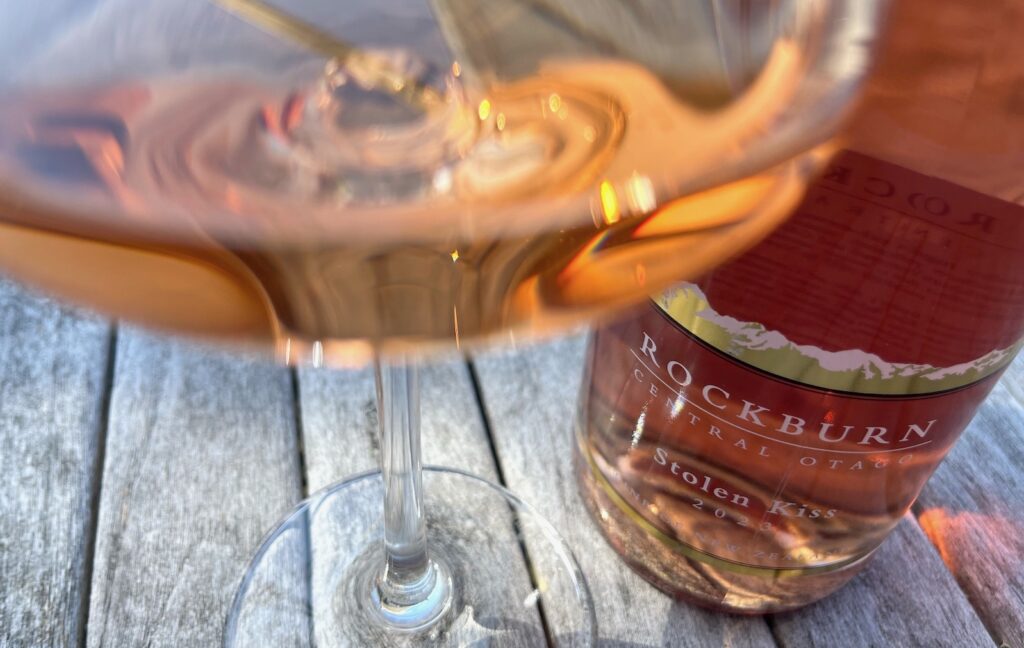
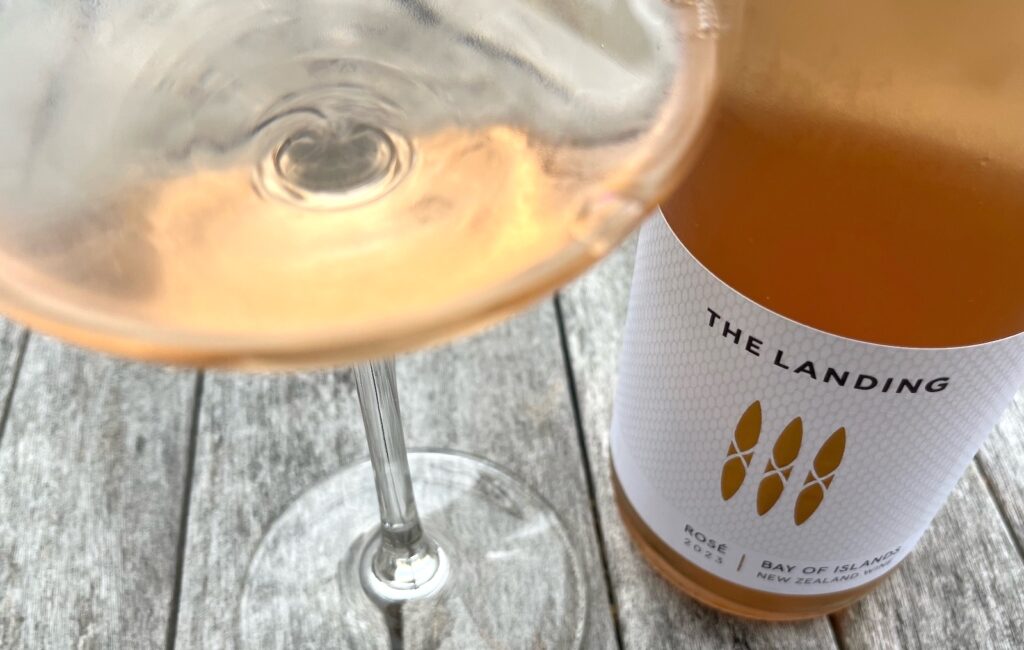
No.6: Rockburn – Stolen Kiss
Pretty in pink. The nose starts off savoury with black and green tea notes, but then turns to the interior of a candy store – peach, cherry, raspberry and rosehip, with a lift of jasmine, musky florals. An impression of sweetness flits across the tongue, and there’s a textural, creme brulée persistence to the palate. The finish is dry and mellow and has good persistence.
No.7: The Landing
A pale salmon pink colour in the glass – very pretty. The perfume was noted to have a “pot pourri, incense quality” and another judge commented on a “provencal herbal, dried grass”. There is as much savoury as sweet here. Crushed shell, tapenade, almond, and a saline, briney acidity gives an extra edge to that. A prickly flutter across the palate – never dull, but quite an interesting balance considering the complexity at play.
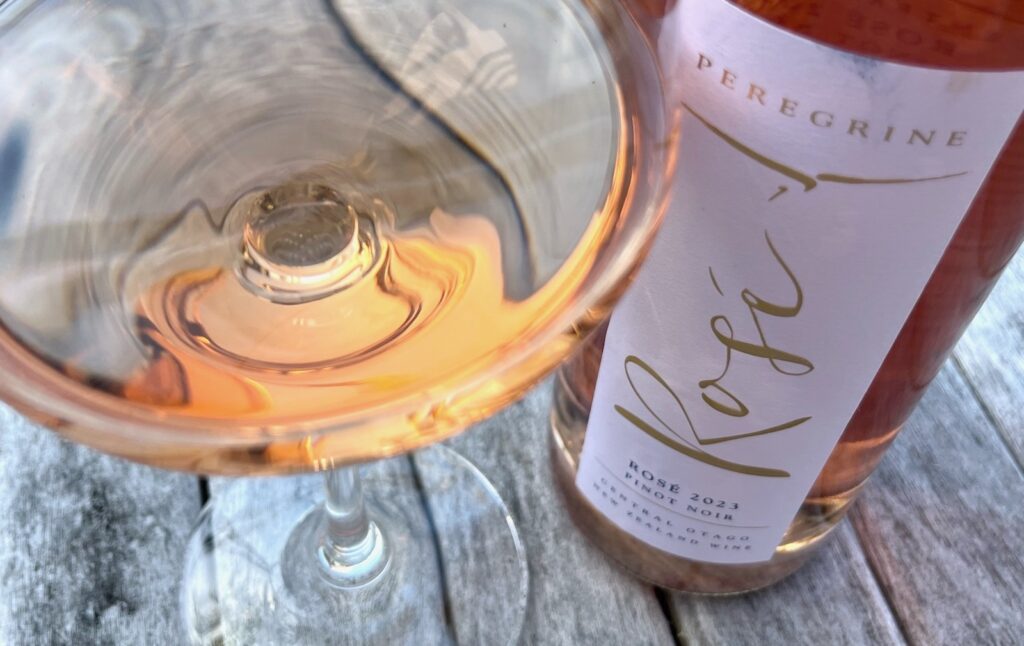
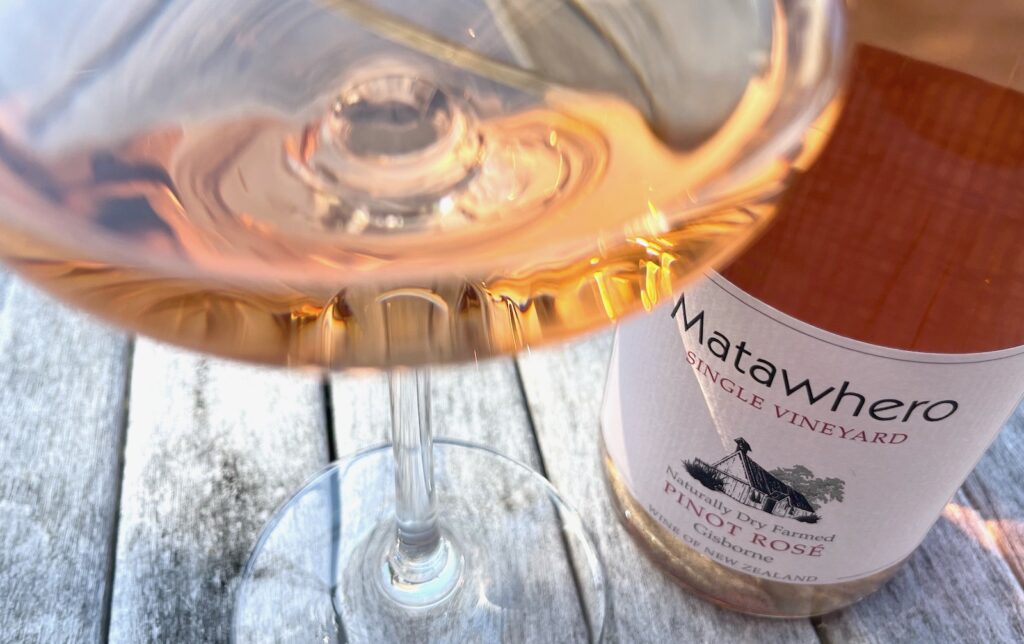
No.8: Peregrine
Another elegant-looking wine in the glass – pale coral pink. The nose is quite plush – one taster noted “it has that strawberries and cream note that people look for”, plus raspberry, red liquorice and crushed herbals. The distinctive Central Otago Pinot element of cherry is there too. Add in the herbal, thyme and lavender and you have a wine that is quite site-specific. Seems to just nudge from dry into that just off-dry spectrum with its juiciness. A zesty zing of acidity and a mineral-rich finish. Yum.
No.9: Matawhero
A few of the wines today were found to have a “crisp sea air” or “saline acidity” – and this was another. It is quite fruit-forward. Dry but really ripe, with peach melba and glossy cherry, but a couple of judges noted a distinctive “sourdough breadcrumb” flavour that was quite unique today. An elegant wine with plenty going on, and a good length on the finish.
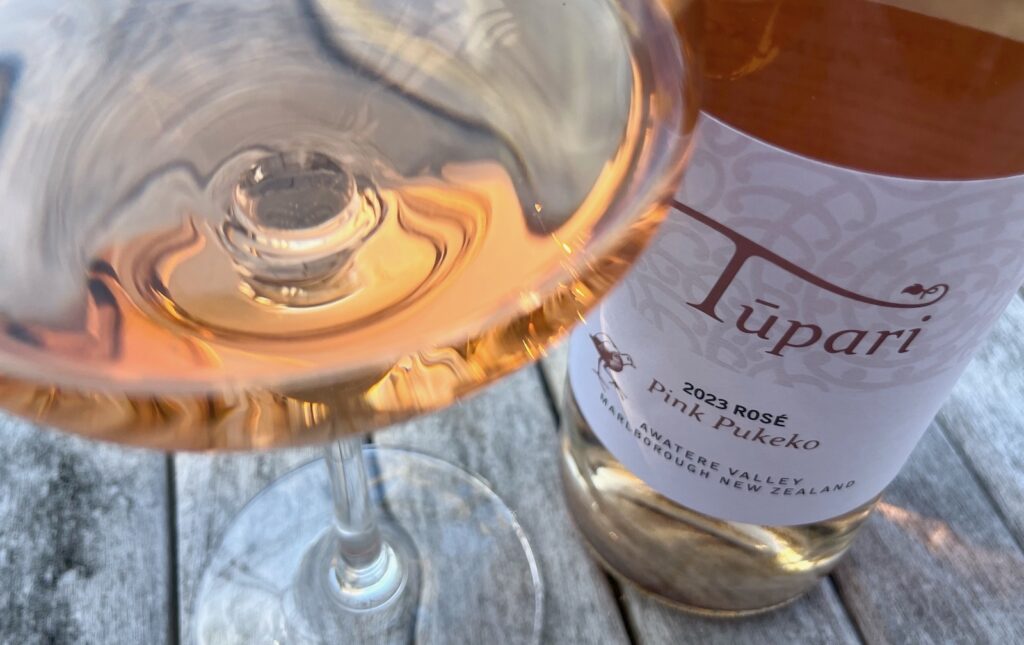
No.10: Tupari – Pink Pukeko
This had one of the judges in song “I just wanna taste it – watermelon sugar high. Tastes like strawberries on a summer evening” with its spring florals of rose and wisteria and lolly pink colour. Yes, watermelon, plus red berries and a nice herbal note. One of the sweeter examples that found favour – probably because it has a tannic phenolic element that adds some funkiness and a “good bitterness” to balance it.
Congratulations to our Top 10 wines! As well as this tasting, we are now teaming up with a venue in Auckland to present an evening tasting through all of our ten best Rosés. On Wednesday 14 February we’ll be at the Vic Road Wine Bar & Cellar in Devonport, starting at 6.30pm.
All the wines will be available in a special “WineFolio Top 10 tasting” box on the night and at a special price – just for that evening. Come along and see what the wines are like, hear about the judging process, and pick out a few favourites.
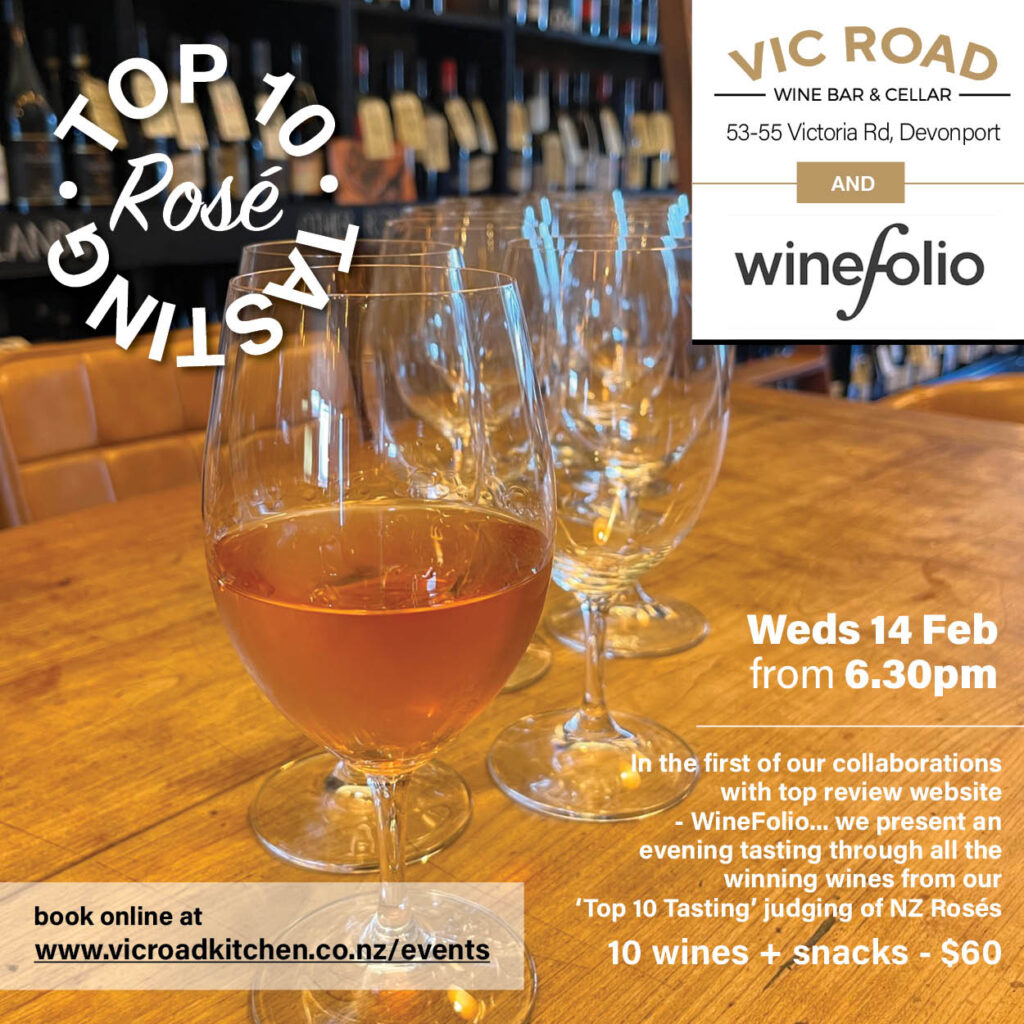

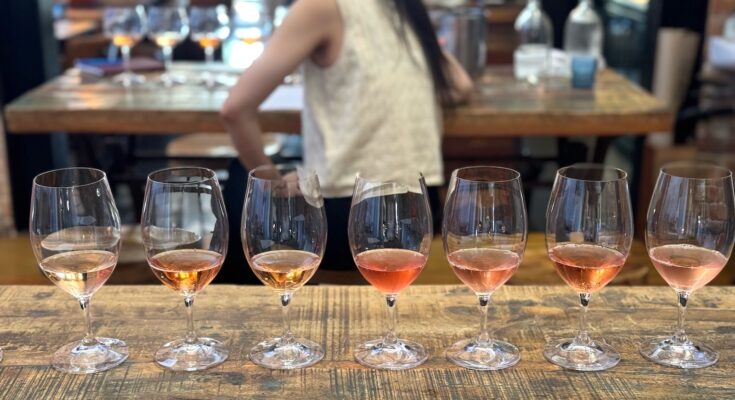
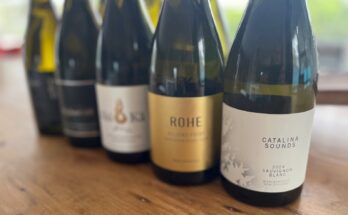
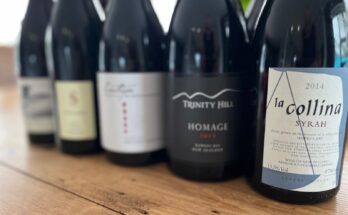
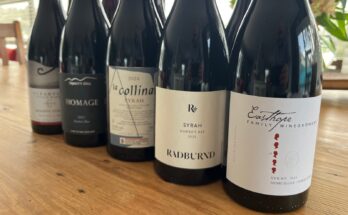
One Comment on “WineFolio ‘Top 10 Tasting’ – Rosé”